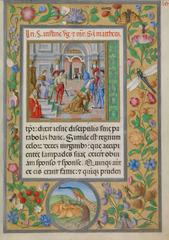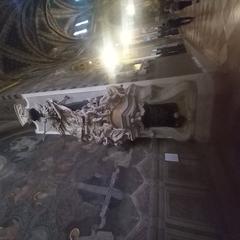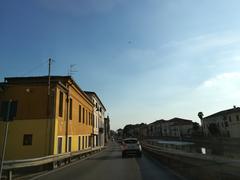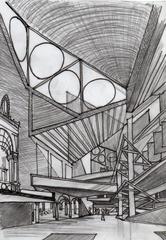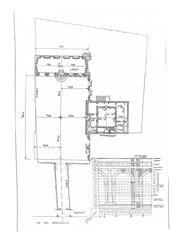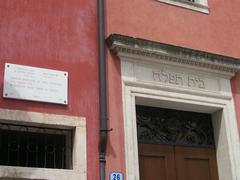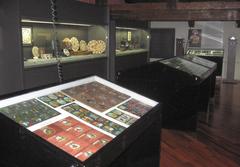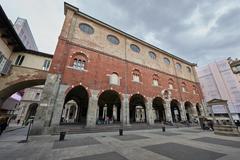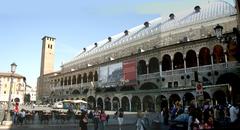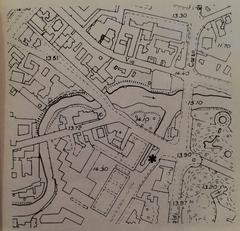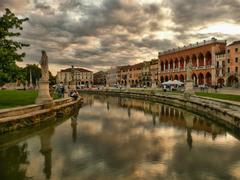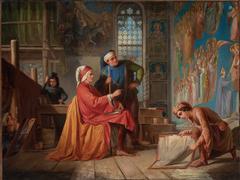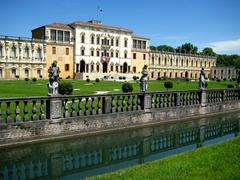Visiting Villa Pisani: Hours, Tickets, and Tips
Date: 18/07/2024
Introduction
Nestled along the scenic Brenta Riviera in Stra, near Padua, Italy, Villa Pisani is a stunning example of Baroque architecture and a timeless testament to Venetian grandeur. Constructed in the early 18th century, this opulent villa was commissioned by the influential Pisani family to reflect their immense wealth and political power, particularly under Alvise Pisani, who became Doge of Venice in 1735. The villa’s strategic location and lavish design, executed by renowned architects like Francesco Maria Preti, Girolamo Frigimelica, and Vincenzo Scamozzi, make it one of the most exquisite estates of its time. With over 100 rooms adorned with frescoes by prominent artists such as Gian Battista Tiepolo, Giovanni Battista Crosato, and Giuseppe Zais, Villa Pisani offers visitors a captivating journey through history and art (The National Gallery).
Throughout its storied past, Villa Pisani has witnessed significant historical events and ownership changes, including its acquisition by Napoleon Bonaparte and later by the Habsburg family. In 1882, it was purchased by the Italian State and transformed into a national museum, preserving its architectural and artistic heritage for future generations. Today, visitors can explore the villa’s opulent halls, intricate frescoes, and expansive gardens, which include a famous labyrinth that has challenged visitors for centuries. Whether you’re an art enthusiast, history buff, or simply seeking a serene escape, Villa Pisani promises an unforgettable experience that bridges the past and present.
Table of Contents
- [A Legacy Forged Through Centuries](#a-legacy-forged-through-centuriesa-legacy-forged-through-centuries)
- [The Rise of the Pisani Family](#the-rise-of-the-pisani-familythe-rise-of-the-pisani-family)
- [A Country Estate of Unparalleled Opulence](#a-country-estate-of-unparalleled-opulencea-country-estate-of-unparalleled-opulence)
- [Architectural Prowess and Artistic Brilliance](#architectural-prowess-and-artistic-brilliancearchitectural-prowess-and-artistic-brilliance)
- [From Private Residence to Napoleon’s Prize](#from-private-residence-to-napoleons-prizefrom-private-residence-to-napoleons-prize)
- [A Shifting Landscape of Ownership](#a-shifting-landscape-of-ownershipa-shifting-landscape-of-ownership)
- [A National Treasure Unveiled](#a-national-treasure-unveileda-national-treasure-unveiled)
- [A Legacy Preserved](#a-legacy-preserveda-legacy-preserved)
- [Visitor Information](#visitor-informationvisitor-information)
- [Villa Pisani Visiting Hours](#villa-pisani-visiting-hoursvilla-pisani-visiting-hours)
- [Villa Pisani Tickets](#villa-pisani-ticketsvilla-pisani-tickets)
- [Travel Tips](#travel-tipstravel-tips)
- [Nearby Attractions](#nearby-attractionsnearby-attractions)
- [Accessibility](#accessibilityaccessibility)
- [Frequently Asked Questions (FAQ)](#frequently-asked-questions-faqfrequently-asked-questions)
- [Visit and Stay Up to Date](#visit-and-stay-up-to-datevisit-and-stay-up-to-date)
A Legacy Forged Through Centuries
The story of Villa Pisani in Padua, Italy, is a captivating tapestry woven through centuries, marked by powerful families, political intrigue, and artistic grandeur. Its origins can be traced back to the early 18th century, a period when the Venetian Republic was experiencing its twilight years.
The Rise of the Pisani Family
The villa stands as a testament to the ambition and wealth of the Pisani family, a prominent Venetian dynasty that rose to prominence in the 17th century. Their influence peaked with Alvise Pisani’s election as Doge of Venice in 1735. This victory fueled the construction of a grand residence, a symbol of the family’s newfound status and power.
A Country Estate of Unparalleled Opulence
The Pisanis chose a strategic location for their ambitious project – a sprawling estate in Stra, along the Brenta Riviera. This area, dotted with luxurious villas, served as a popular retreat for Venetian nobility seeking respite from the city’s bustling life. The family commissioned Francesco Maria Preti, a renowned architect of the time, to design a villa that would outshine all others.
Architectural Prowess and Artistic Brilliance
Construction began in 1721, and over the following decades, Villa Pisani transformed into a masterpiece of Baroque architecture. Preti’s design, later enhanced by contributions from other notable architects like Girolamo Frigimelica and Vincenzo Scamozzi, showcased a harmonious blend of grandeur and elegance. The villa’s interiors became a canvas for renowned artists of the era, including:
- Gian Battista Tiepolo: His frescoes, particularly the breathtaking ceiling mural in the Ballroom depicting the “Glory of the Pisani Family,” are considered among his finest works (The National Gallery).
- Giovanni Battista Crosato: He contributed with illusionistic frescoes that adorn the villa’s walls, creating a sense of boundless space and grandeur.
- Giuseppe Zais: His landscape paintings added a touch of bucolic charm to the villa’s interiors.
From Private Residence to Napoleon’s Prize
For over half a century, Villa Pisani served as a lavish summer residence for the Pisani family, hosting extravagant parties and gatherings that attracted the elite of Venetian society. However, the family’s fortunes took a turn with the fall of the Venetian Republic in 1797. Napoleon Bonaparte, having conquered Venice, claimed Villa Pisani as part of his spoils of war.
A Shifting Landscape of Ownership
Napoleon’s ownership marked the beginning of a period of change for Villa Pisani. He gifted the villa to his stepson, Eugène de Beauharnais, Viceroy of Italy. Later, in 1814, the Habsburg family, who had gained control of the Veneto region, took possession of the villa. Throughout these transitions, Villa Pisani continued to be a place of prestige, hosting notable figures like Tsar Alexander I of Russia and even Napoleon himself, who returned for a visit in 1807.
A National Treasure Unveiled
In 1882, the Italian State purchased Villa Pisani, recognizing its historical and artistic significance. The villa underwent extensive restorations to regain its former glory and was opened to the public as a national museum. Today, visitors can step back in time and wander through its opulent halls, marveling at the intricate frescoes, the lavish furnishings, and the stories whispered through the centuries.
The Labyrinth - A Test of Wit and Patience
No exploration of Villa Pisani is complete without venturing into its famed labyrinth. This intricate maze, made up of towering hedges, is said to be one of the most challenging in the world. Legend has it that Napoleon himself got lost within its winding paths. Whether you conquer the labyrinth or succumb to its playful confusion, the experience is sure to be memorable.
A Legacy Preserved
Villa Pisani stands today as a testament to a bygone era of Venetian splendor. Its journey through the hands of powerful families, its architectural grandeur, and its artistic treasures offer a captivating glimpse into the past. As you stroll through its halls and gardens, you become part of the ongoing narrative of this remarkable villa, a story that continues to unfold with each passing visitor.
Visitor Information
Villa Pisani Visiting Hours
Villa Pisani is open to the public year-round, although hours may vary seasonally. Generally, the villa opens at 9:00 AM and closes at 6:00 PM. It is advisable to check the official website for the most current visiting hours before planning your trip.
Villa Pisani Tickets
Ticket prices for Villa Pisani vary depending on age and group size. Adults typically pay around €10, while children, students, and seniors may be eligible for discounted rates. Special guided tours and events may have additional charges. Tickets can be purchased online or at the entrance.
Travel Tips
When visiting Villa Pisani, consider the following tips to enhance your experience:
- Arrive Early: To avoid crowds and fully enjoy the villa and its gardens.
- Wear Comfortable Shoes: The estate is quite large, and you’ll likely do a lot of walking.
- Check for Special Events: The villa hosts various cultural events and exhibitions throughout the year.
- Bring a Camera: The picturesque scenery offers numerous photo opportunities.
Nearby Attractions
While in the area, you may also want to explore other nearby attractions:
- Brenta Riviera: A scenic route along the Brenta River, dotted with historic villas.
- Padua: Home to the famous Basilica of Saint Anthony and the Scrovegni Chapel.
- Venice: Just a short drive away, offering endless cultural and historical sites.
Accessibility
Villa Pisani is committed to being accessible to all visitors. Ramps and elevators are available to facilitate access for those with mobility challenges. It is recommended to contact the villa in advance to ensure any specific needs are accommodated.
Frequently Asked Questions (FAQ)
What are the opening hours of Villa Pisani?
Villa Pisani generally opens at 9:00 AM and closes at 6:00 PM. However, seasonal variations may apply, so it is best to check the official website for current hours.
How much are the tickets for Villa Pisani?
Ticket prices are approximately €10 for adults, with discounts available for children, students, and seniors. Special events and guided tours may have additional costs.
Is Villa Pisani accessible to visitors with disabilities?
Yes, Villa Pisani is equipped with ramps and elevators to accommodate visitors with mobility challenges. It is advisable to contact the villa in advance to ensure specific needs are met.
Visit and Stay Up to Date
Ready to explore Villa Pisani? Be sure to download our mobile app Audiala for the latest updates, travel tips, and more. Check out our other related posts and follow us on social media for ongoing updates and inspiration.
Conclusion
Villa Pisani stands as a remarkable emblem of Venetian splendor, encapsulating centuries of history, artistic achievement, and architectural brilliance. Its journey from a private residence of the powerful Pisani family to a national museum open to the public reflects the villa’s enduring significance and cultural value. Visitors are invited to immerse themselves in the opulence of the 18th century, marvel at the masterpieces of renowned artists, and explore the meticulously designed gardens and labyrinth that have captivated generations. The villa’s strategic location along the Brenta Riviera also offers additional opportunities to explore nearby historic villas and the charming town of Padua, making it a must-visit destination for travelers in the Veneto region. For those planning a visit, checking the latest information on opening hours, ticket prices, and guided tours on the official website is recommended to ensure a seamless and enriching experience.
References
- The National Gallery, 2023, Giovanni Battista Tiepolo source url
- Villa Pisani Official Website, 2023, source url
